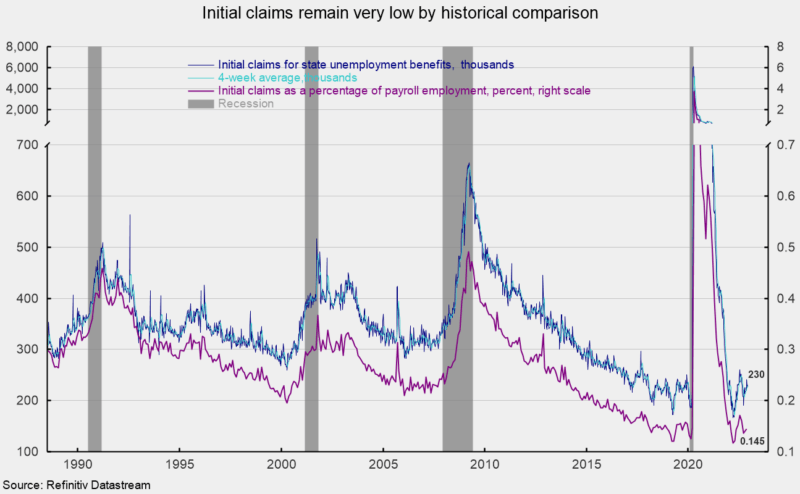Average Weekly Initial Claims Hits the Highest Level Since September
Initial claims for regular state unemployment insurance rose by 4,000 for the week ending December 3rd, coming in at 230,000. The previous week’s 226,000 was revised up from the initial estimate of 225,000 (see first chart). Weekly initial claims have risen in seven of the last twelve weeks.
The four-week average of weekly initial claims rose to 230,000, up 1,000 for the week. That was the eighth increase in the last ten weeks and the highest level since September 3rd (see first chart).
When measured as a percentage of nonfarm payrolls, claims came in at 0.145 percent for November, up from 0.140 in October and above the record low of 0.117 in March (see second chart). While the level of weekly initial claims for unemployment insurance remains very low by historical comparison, the rising trend is a concern.
Job-cut announcements have increased recently adding to the concern over the rising trend in initial claims. Job cut announcements jumped to 76,835 in November versus 33,843 in October, the highest level since January (see third chart). While the data continue to imply a tight labor market, continued elevated rates of price increases, an aggressive Fed tightening cycle, and fallout from the Russian invasion of Ukraine remain risks to the economic outlook.
The number of ongoing claims for state unemployment programs totaled 1.258 million for the week ending November 19th, a decrease of 79,919 from the prior week (see fourth chart). State continuing claims remain within the 1.2 million and 1.5 million range (see fourth chart).
The latest results for the combined Federal and state programs put the total number of people claiming benefits in all unemployment programs at 1.284 million for the week ended November 19th, a decrease of 83,896 from the prior week.
While the overall low level of initial claims suggests the labor market remains tight, the upward trend in claims and rising job-cut announcements are concerns. The tight labor market is a crucial component of the economy, providing support for consumer spending. However, persistently elevated rates of price increases already weigh on consumer expectations for the future, and if consumers lose confidence in the labor market, they may significantly reduce spending. The outlook remains highly uncertain.









